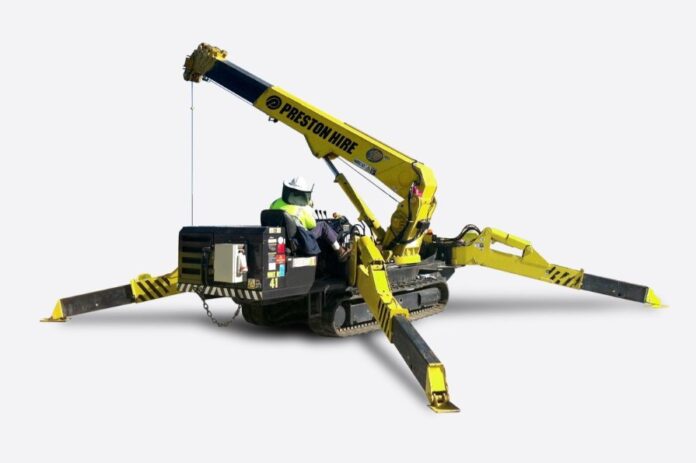
Crawler cranes are an essential part of the construction industry. These cranes can be broadly classified into two distinct types: wheeled and tracked. The debate about whether to opt for tracked crawler cranes or wheeled ones has been ongoing for a long time, with different people having different opinions.
To be honest, there is no definitive answer that can conclude this debate. The decision solely depends on what and where the machine will be used for.
Choosing between wheeled and tracked crawler cranes is an important decision and must be made after considering the pros and cons of both. This might sound overwhelming but worry not. We are here to help.
We will make your crane hire journey easy by discussing all the advantages of both machines to help you make an informed choice.
So, let’s start.
What Are Tracked Crawler Cranes?
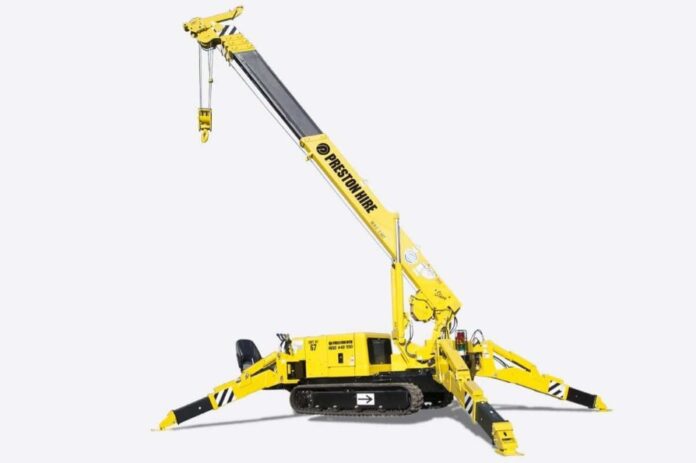
Tracked crawler cranes are heavy-duty machines equipped with hydraulic systems. They can also be called hydraulic crawler cranes, which move on tracks for increased stability and lifting capacity on various terrains.
Here are some benefits of working with tracked crawler cranes:
- Better stability ─ One significant advantage of utilizing tracked crawler cranes is their unparalleled stability. The wide base and tracks of crawler cranes distribute the weight more evenly. This results in better stability in various ground conditions, which is crucial for lifting heavy loads safely and significantly mitigates the risk of accidents and ensures safer working conditions.
- More mobility on difficult terrain ─ the exceptional mobility of tracked crawler cranes on challenging terrains is a boon for construction projects in diverse environments. Whether traversing muddy, uneven, or soft grounds, where wheeled vehicles would falter, these cranes navigate with ease, facilitating uninterrupted progress even in the most unforgiving conditions.
- Higher lifting capacity ─ Furthermore, the robust design of tracked crawler cranes enables them to boast higher lifting capacities compared to alternative crane types., making them suitable for large-scale construction projects.
- No need for a setup foundation ─ Unlike some crane variants that necessitate elaborate foundation preparations or outrigger deployment, tracked crawler cranes can operate directly on solid ground. This eliminates the need for time-consuming setup procedures, thereby reducing project downtime and associated costs.
- Reduced ground pressure ─ tracked crawler cranes exert reduced ground pressure, thanks to their wide tracks that distribute weight over a larger surface area. This not only minimizes site damage but also facilitates work in environmentally sensitive areas, where preserving the natural landscape is paramount.
What Are Wheeled Crawler Cranes And Its Benefits?
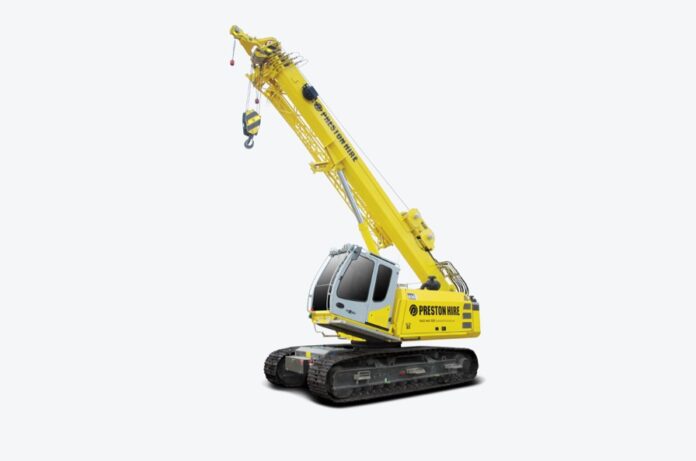
Wheeled crawler cranes, often called mobile cranes or all-terrain cranes, come mounted on a set of rubber tyres rather than tracks. These machines provide significant advantages in various construction and lifting scenarios.
Here are some of the benefits of using wheeled crawler cranes:
- Enhanced mobility ─ Wheeled crawler cranes can move quickly between and within job sites without additional transport equipment. So, you do not need to hire additional trucks to transport the cranes to the worksites.
- Versatile machines ─ These cranes exhibit remarkable adaptability, capable of navigating both paved surfaces and moderate off-road terrains with ease. Their versatile design ensures optimal performance across diverse environments, offering unparalleled flexibility in project execution.
- Rapid setup ─ Wheeled crawler cranes are renowned for their expedited setup process, requiring minimal time and effort compared to their tracked counterparts. This rapid deployment capability is particularly advantageous for projects characterized by tight deadlines, facilitating swift commencement of operations and ensuring timely completion.
- Economical ─ The ability to move independently and quickly from one location to another reduces the logistical costs associated with crane movement and setup.
Factors to Consider Before Choosing Between Tracked or Wheeled Crawler Cranes
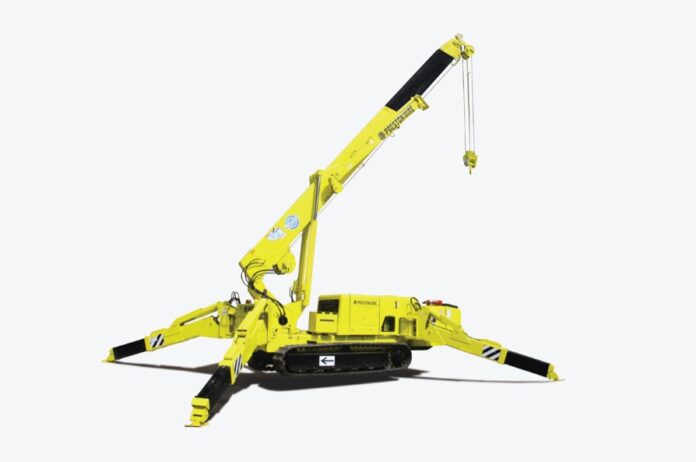
Choosing between tracked or wheeled crawler cranes involves considering several factors to ensure the crane is best suited for your project’s specific needs. Here are key factors to consider:
Manoeuvrability
While tracked vehicles have better traction due to proper weight distribution, they fail to manoeuvre correctly on rough terrains and snowy surfaces.
If your worksite is located in such ground conditions, use wheeled cranes. Moreover, the wheeled crawler’s standard steering gives more accurate and intuitive handling control than tracked cranes’ skid steering, making the former a much better option.
Transportation
As we stated before, tracked vehicles cover a broader surface area, giving them great traction. This makes them ideal for working with slippery, muddy, and uneven terrain. However, transporting them from one worksite to another can be an ordeal, and you might have to arrange for trailers for transportation.
Wheeled crawler cranes, on the other hand, are very road-friendly, and you can easily drive these machines from one site to the other. Thus, you do not need to spend additional money on arranging transportation.
Machine Cost
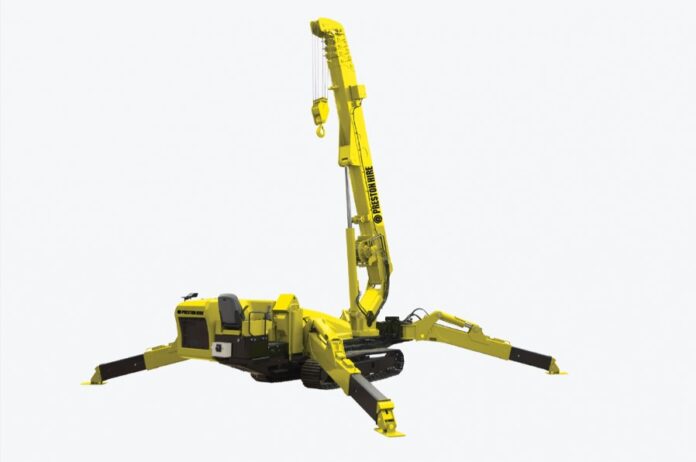
Wheeled crawler cranes cost much less than their tracked counterparts. The cost of replacing tyres and other components for wheeled machinery is significantly lower than the cost associated with replacing tracks, making wheels a more economically viable option in terms of upfront and maintenance costs.
Yet, a simple cost comparison might not capture the full picture. Heavy-duty tyres often require replacement after 600 to 1,000 hours of operation, whereas rubber tracks can endure up to 1,600 hours, and steel tracks boast an even longer lifespan. The key lies in accurately assessing the long-term operational costs.
Ground Impact
Wheeled machinery tends to have a more significant impact on softer terrains due to higher ground pressure than tracked vehicles. This makes tracked vehicles more suitable for tasks like grading and landscaping. However, it’s important to note that heavy steel tracks can damage hard surfaces like concrete and asphalt.
Final Words ─ Making The Right Choice
In the debate between wheeled and tracked crawler cranes, the right choice depends on the job’s requirements. There is no one-size-fits-all answer to this debate, as both sides have strengths and weaknesses of their own.
Regardless of the choice you make, what you need to consider foremost is that you choose quality over everything. A high-quality machine, whether tracked or wheeled, will perform well and increase the overall productivity of the worksite.





